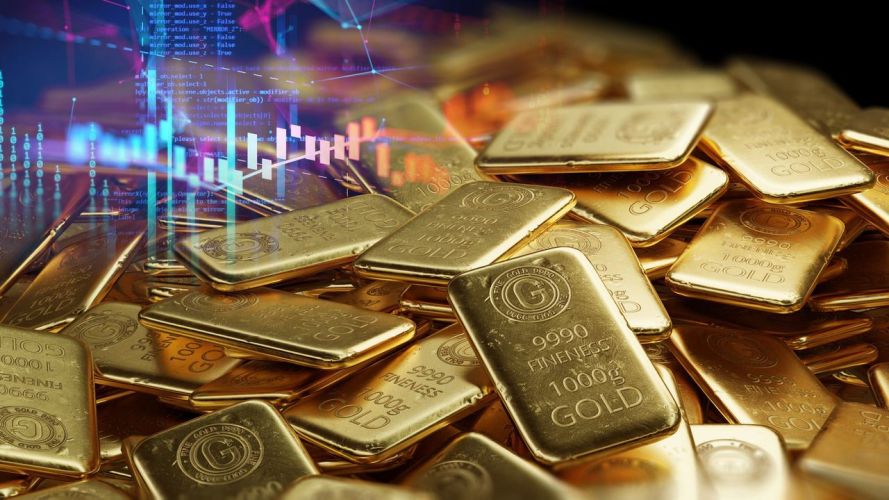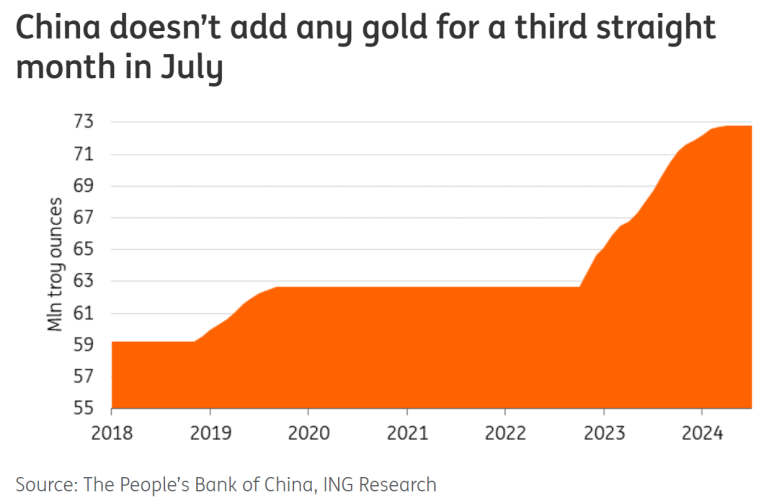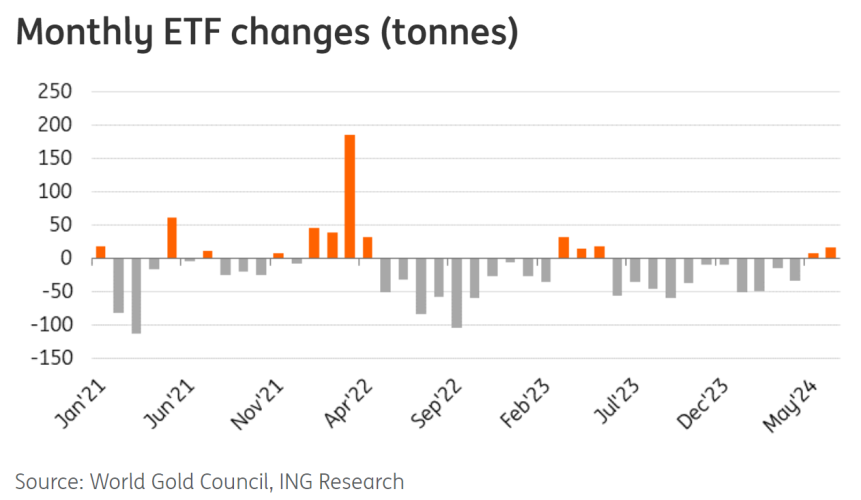
Gold will maintain its upward momentum as Fed cuts, sovereign buying, ETF flows support prices – ING’s Manthey
(Kitco News) – Gold prices will peak in the fourth quarter as investors focus on Fed cuts, while ETF inflows and central bank buying continue to provide support against a backdrop of geopolitical risk, according to Ewa Manthey, Commodities Strategist at ING.
In the bank’s monthly update, Manthey noted that gold fell along with the global equities sell-off at the start of the week as fears of a U.S. recession spiked. “Gold, usually a safe haven during such uncertainty, sold off sharply on Monday amid likely liquidations to cover margin calls on other assets,” she said.

“Looking ahead, we believe gold should regain its footing once again, amid the ongoing geopolitical uncertainties and expectations of interest rate cuts from the US Fed,” Manthey said. “Despite Monday’s sharp drop, gold is still up about 15% so far this year and is one of this year’s best-performing commodities, aided by central bank buying, Asian consumers and expectations the Fed is getting close to cutting rates. It hit an all-time high in July amid strong appetite from central banks and Asian consumers.”
“We believe, after a consolidation phase, gold will maintain its upward momentum,” she added.
Manthey wrote that the attention of gold investors is squarely focused on the scale and timing of the Federal Reserve’s expected interest rate cuts.
“The Fed has held its key policy rate in a target range of 5.25% to 5.5% – the highest level in more than two decades – since last July,” she said. “Our US economist now sees a 50bp cut in September followed by a series of 25bp moves that would get us back to a Fed funds rate of around 3.5% by next summer.”
She noted that central bank buying remained relatively strong in June, with World Gold Council data showing 12 tonnes of net buying during the month.
“June’s purchases were once again led by emerging market central banks. Uzbekistan and India both added 9 tonnes to their gold reserves during the month,” Manthey said. “However, China has seen a slowdown in gold purchases over recent months. The People’s Bank of China didn’t add gold to its reserves for a third consecutive month in July.”

The largest seller in June was Singapore, which liquidated 12 tonnes – “it reduced its gold reserves in June by the most since at least 2000,” Manthey said.
“Buying strength continues this year, although gross purchases and sales are lower compared to the same period last year,” she noted. ‘In 2023, central banks added 1,037 tonnes of gold – the second-highest annual purchase in history – following a record high of 1,082 tonnes in 2022. However, we still expect central bank demand to remain strong looking ahead amid the current economic climate and geopolitical tensions and as prices retreat from record highs.”
Manthey also pointed out that funds have continued their recent streak of positive flows.
“Following the strongest month since May 2023, global gold ETFs have now seen inflows for two months in a row, according to data from the WGC,” she wrote. “In June, notable European and Asian buying offset outflows from North America. Although June and May inflows helped limit global gold ETFs’ year-to-date losses to US$6.7bn (-120t), this remains the worst first half of the year since 2013 – both Europe and North America saw hefty outflows while Asia was the only region with inflows.”

“Investor holdings in gold ETFs generally rise when gold prices gain, and vice versa,” Manthey said. “However, gold ETF holdings have been in decline for much of 2024, while spot gold prices have hit new highs. ETF flows finally turned positive in May.”
ING believes gold will peak in the fourth quarter as geopolitics will continue to drive price action. “The war in Ukraine and the Middle East and tensions between the US and China suggest that safe-haven demand will continue to support gold prices in the short to medium term,” she said. “The US presidential election in November and the long-awaited US Fed rate cut will also continue to add to gold's upward momentum through to the end of the year, in our view. Central banks are also expected to keep adding to their holdings, which should offer support.”
We see gold averaging $2,380 in the third quarter and prices peaking in the fourth quarter at $2,450/oz, resulting in an annual average of $2,301/oz.
ING sees spot gold averaging $2,380 in the third quarter before prices peak at $2,450 per ounce in Q4 for an annual average of $2,301 per ounce.
Kitco Media
Ernest Hoffman
David